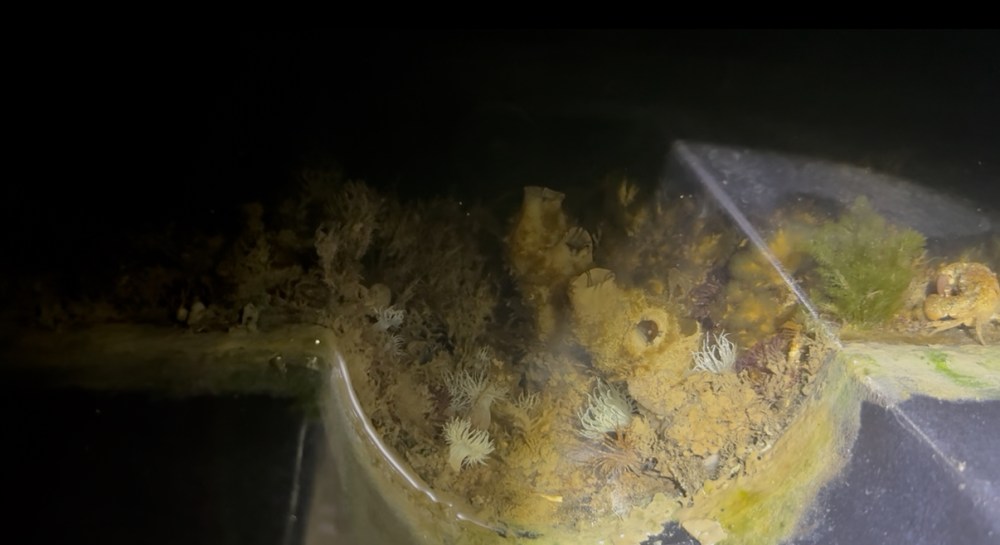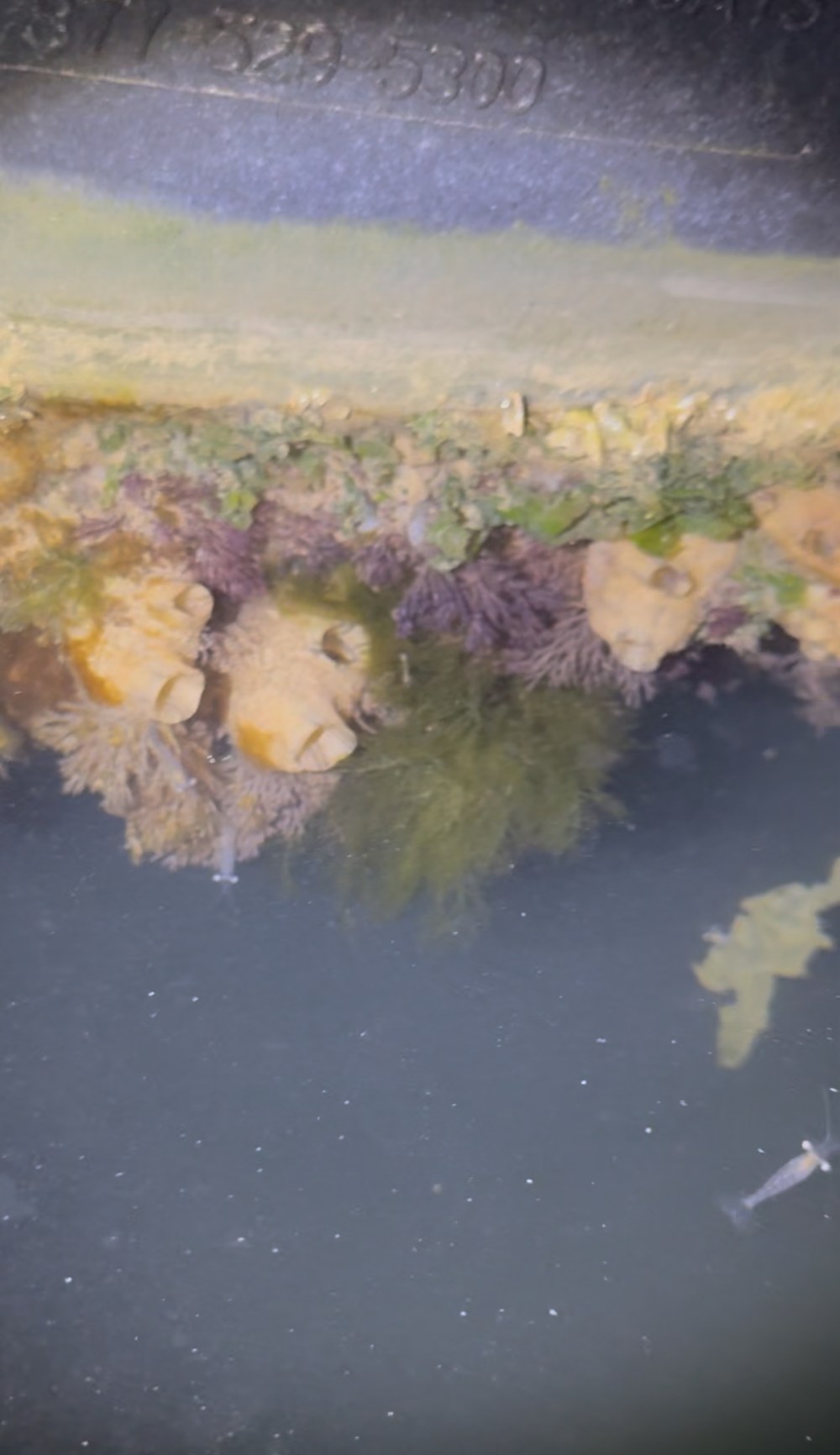Fouling communities not so foul!
Fouling communities are fascinating groups of organisms that grow on artificial surfaces like docks, boats, and habitat traps. Some examples of organisms making up a fouling community include (but aren’t limited to) barnacles, tunicates, sponges, and algae! A fantastic way to sample these communities is by dip netting, which involves gently scraping a small net against a dock to collect the organisms living there. These communities constantly change with the seasons, making each sampling experience unique. Some species found in fouling communities can serve as indicator species, meaning their presence can reveal important information about the health of the habitat. Scientists use these organisms to monitor environmental conditions, identifying species commonly associated with either poor or healthy ecosystems.

Organisms growing on IOP’s dock!
Left undisturbed, fouling communities can form dense, diverse layers of marine life. These organisms play essential roles in aquatic ecosystems, providing habitat and food for other marine creatures. However, they can also pose challenges, such as biofouling on boats and structures aka building up too much or growing inside of boat motors. Studying fouling communities helps scientists track invasive species, understand ecological interactions, and assess environmental changes over time. Whether you’re a scientist or just a curious explorer, dip netting around marinas offers a great way to see marine life!

Tunicates, sea lettuce, hydroids, a grass shrimp, and so many more organisms use structures like docks at their habitat.
